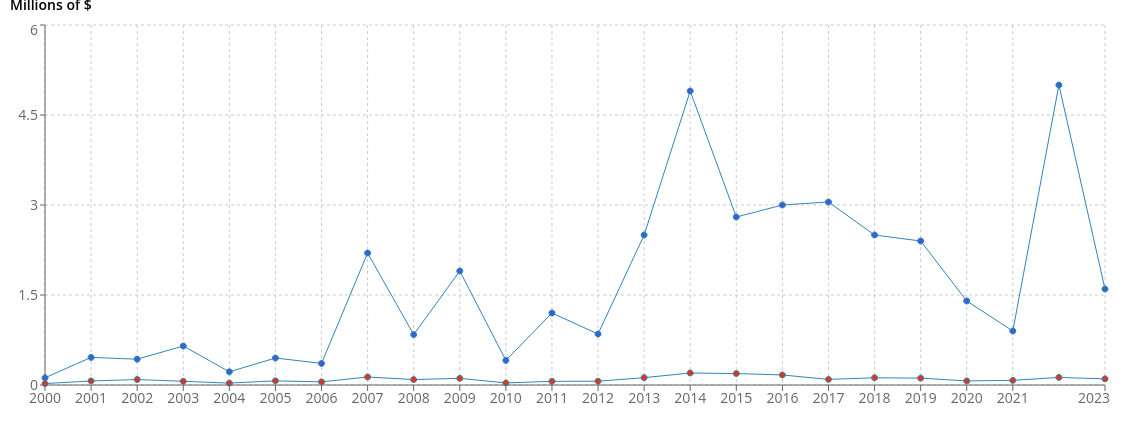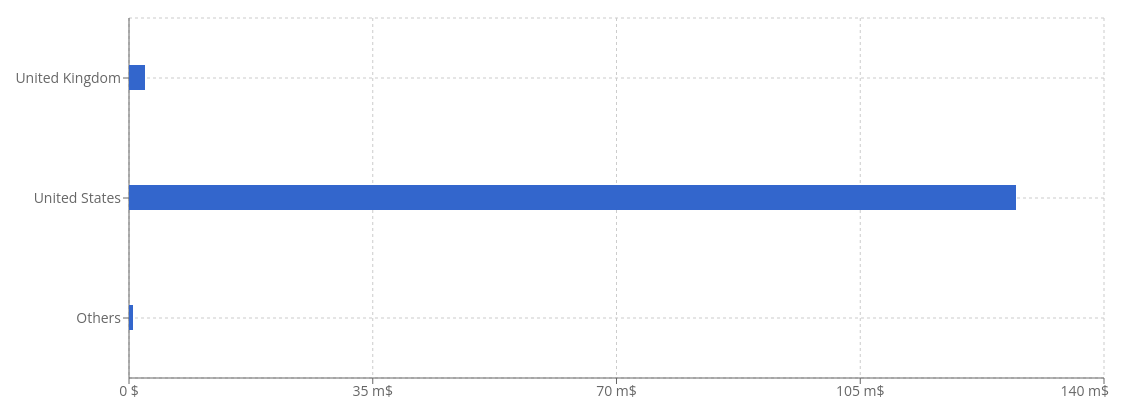Milton Clark Avery, 20th century American art’s forgotten precursor
[02 Jun 2023]Recognized for his figurative and intimate works, and later for works whose abstraction inspired Mark Rothko’s and Adolph Gottlieb’s Expressionism, Milton Clark AVERY (1885-1965) was a close friend of the giants of 20th century American art. Indeed their long weekly conversations contributed to the birth of the New York School and the blossoming of American post-war abstract painting. We take a closer look at Avery’s discreet career and his work which has recently enjoyed a substantial gain in interest from both institutions and the market.
Of Avery’s pictorial work, Mark Rothko once wrote “this conviction of greatness, the feeling that one was in the presence of real events was immediate on encountering his work” (Tribute to Milton Avery, 1965, Smithsonian Museum Archive). Although Rothko was among a number of well-established artists who had tremendous respect for his work, Milton Avery has remained a relatively discreet player both in Art History and on the art market. Indeed, considering his importance as a precursor of the great American abstract movements, Avery’s works have, until recently, been circulating at very accessible prices.
Renewed interest has brought Avery’s work out of the shadows
Avery has an important place in 20th century American art because his work represents the synthesis between Western modernity and the American artistic preoccupations of his era. His immense talent as a colorist and his unique sense of composition are all good reasons for the public to rediscover an œuvre that is rarely shown outside the United States. Last autumn, when London’s Royal Academy opened its doors to the work of the North American painter, it was a first on this side of the Atlantic. The exhibition brought together around 70 of his most famous paintings from the 1930s to the 1960s.
The RA exhibition opened to rapturous headlines in the UK press, which underscored the rediscovery of an œuvre that had been left far too long in the shadows. The Telegraph’s article was titled the 20th century colossus you’ve probably never heard of, while The Times described Avery as the first great American modern colorist.
Before the Royal Academy show, Avery’s market was more or less slumbering. But its very announcement was enough to trigger a vigorous response from the market with a new auction record at $6 million hammered in May 2022 just a few months before its opening. Avery’s first 7-digit result (in USD) did not come until 2009, and it was for one of his figurative works created in 1945. Since then his market has generated around 30 seven-digit results. While his friend Adolph GOTTLIEB’s record is roughly equivalent to his ($6.5 million), it was hammered much earlier (15 years ago). Mark ROTHKO, on the other hand, is way ahead with no less than 145 million-plus results to his name since the end of the 1980s, including a record at over $86.8 million in 2012 for one of his best color abstractions.
Evolution of Milton Avery’s auction record (copyright Artprice.com)

Comparisons of auction records of Avery, Gottlieb and Rothko
Milton Clark Avery’s auction record: $6 million for The Letter (1945), Sotheby’s NY, 17 May 2022
Adolph Gottlieb’s auction record: $6.5 million for Cool Blast (1960), Christie’s NY, 13 May 2008
Mark Rothko’s auction record: $86.8 million pour Orange, Red, Yellow (1961), Christie’s NY, 8 May 2012
.
Milton Avery turnover at auction : geographical distribution since 2000 (copyright Artprice.com)

Brief Biography
Milton Avery was born into a working-class family in 1885 in Altmar, New York. His journey to becoming a painter was by no means a foregone conclusion. He left school at 16 and spent over a decade doing various factory jobs as an aligner, fitter, turner and mechanic. In 1905, Avery enrolled in an evening class in Connecticut to study commercial correspondence… but his tutor noticed his talent for drawing and advised him to switch to life drawing lessons. After 15 years of artistic training in New England, he moved to New York in 1925 where he successfully infiltrated the art scene and befriended some of the most important painters in history, including Mark Rothko and then Barnett Newman. In 1931, New York’s Museum of Modern Art revealed the work of Fauvist artists, including that of Matisse, to the American public and it left a very strong impression on Avery, whose work became increasingly abstract. He immediately began to eliminate and simplify, leaving nothing but color and pattern.
In 1929, a museum in Washington acquired several of his works, while exhibitions in other museums ensured his influence. It was not until 1952, at the age of 67, that Avery obtained his first museum retrospective. Inaugurated at the Baltimore Museum of Art, this major exhibition of 85 works traveled (in reduced form) to other locations in Washington DC, Hartford and Boston. At the end of his career, in 1960, his work was the subject of a retrospective at the Whitney Museum in Washington. These exhibitions finally ensured him national recognition, although he had remained almost completely unknown during his forty years of intense artistic activity. Today, his work has its place in the world’s most respected art museums, including the National Gallery of Art in Washington, the Tate Gallery in London, the MoMA in New York and the Los Angeles Museum of Art.




 30.6
30.6
